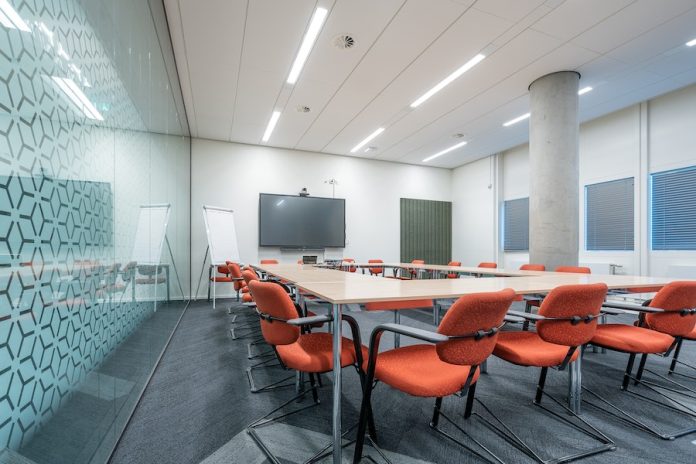Businesses are going digital more and more, and it’s not just because of tools for resource planning or process automation. Big data, cloud computing, mobility, and social media are examples of technological advancements that are fostering the development of new marketing and operational skills. Technology is becoming too ingrained in business operations and too crucial in the competitive market to be left to the IT function alone.
As a result, numerous senior executive teams have been requested to take on technology-related concerns. Boards are starting to adopt a strategic perspective on how technological changes are influencing the future of their organizations. More boards than ever before are posing inquiries to guarantee that CEOs concentrate on the appropriate problems. A deeper level of virtual board software involvement is also being used as a tool to get around internal politics and secure support for more significant, integrated technology investments. Check out more about technological advancements at idealsboard.com.
A Constructive IT Role For Boards
Good governance and the efficiency of a board portal depend on constructive criticism. The most effective boards are proactive in actively incorporating it into their culture because they recognize its worth.
Proper questioning is essential to good government. They can offer a significant challenge, uncover fresh viewpoints, enhance comprehension and decision-making, facilitate the flow of ideas and information, foster relationships and trust, and identify and reduce risk.
However, a constructive challenge can only be beneficial if sincere; otherwise, what good is assurance? As a board member, it is your responsibility to ensure that the choice has been thoroughly reviewed before you commit an organization, public or private, to it. Board meetings and paperless meeting solution are protective measures.
The cultural behavior of constructive challenge is important for boards in all industries, but it is crucial for public organizations.
Constructive challenge needs to be fostered because it is only sometimes present at a cultural level, at least not consistently or to a high standard. Both centralized policy and regulatory frameworks can support it. All board members, executive and non-executive, must actively participate; delivering challenges cannot and should not be the sole purview of a few board members.
Elevating Boardroom Efficiency: What to Know
Combining technology, effective communication techniques, and efficient procedures can increase boardroom productivity. Here are some suggestions to increase boardroom effectiveness:
- Implement online collaboration solutions that make sharing documents and collaboration easier. Platforms like Microsoft Teams or Slack can improve collaboration and make it simpler for board members to view important papers and have real-time discussions about them.
- Board Portal Software: Invest in board portal software to consolidate all agendas, documents, and board-related information in one safe area. As a result, less physical paperwork is required, and information access is made simpler.
- Electronic Signatures: Utilize electronic signature technologies to hasten the approval and signing of documents. The requirement for actual signatures is removed, speeding up the decision-making process.
- Utilize real-time dashboards that offer crucial performance metrics and pertinent data. As a result, board members can make decisions swiftly and with knowledge, without waiting for in-depth reports.
- Implement agile meeting arrangements that concentrate on essential choices and conversations. Establish clear agendas and time constraints for each item on the agenda to avoid needlessly drawn-out sessions.
You may greatly improve board management software efficiency by integrating technology, encouraging better communication, and improving processes.
The Latest Trends in Boardroom Technology
Here are the latest trends in Boardroom technology that are quite popular:
- Integration of AI and Analytics: To deliver insights into critical performance metrics, risk management, and strategic decision-making, artificial intelligence (AI) and advanced analytics are being incorporated with boardroom technologies. AI techniques aided data analysis and trend spotting.
- Focus on Cybersecurity: Due to growing concerns about cyber attacks, boardroom technologies have placed a greater emphasis on cybersecurity. This featured encryption, encrypted communication systems, and frequent security checks.
- Board portals and collaboration tools: For document management, secure communication, and board member participation, board portals and collaboration platforms were becoming industry standards. These solutions seek to improve information sharing and streamline procedures.
- Blockchain for Governance: A few businesses were looking into how to use this technology to improve governance procedures. The decentralized and secure features of blockchain attracted those seeking to enhance accountability and transparency in boardroom procedures.
- Paperless Meetings: The trend for paperless board meetings results from the movement towards sustainability and efficiency. Board members were accessing online board meeting materials digitally via tablets or other devices, which reduced the need for printed documentation.
- Augmented and Virtual Reality: The use of augmented reality (AR) and virtual reality (VR) technologies for immersive presentations, training sessions, and simulations was being investigated in some forward-thinking boardrooms.
- Enhanced Security Measures: Just as cyber threats changed, so did boardroom security measures. To protect sensitive information, this included multi-factor authentication, biometric authentication, and other cutting-edge security methods.
Users can operate basic functions, including integrated room control, lighting, window treatments, HVAC control, occupancy monitoring and room scheduling, centralized distribution, and one-touch meetings using smart or automated conference room technology. A conference room’s integration of technology and systems offers remote and in-office workers a relaxing, efficient, and seamless experience.

